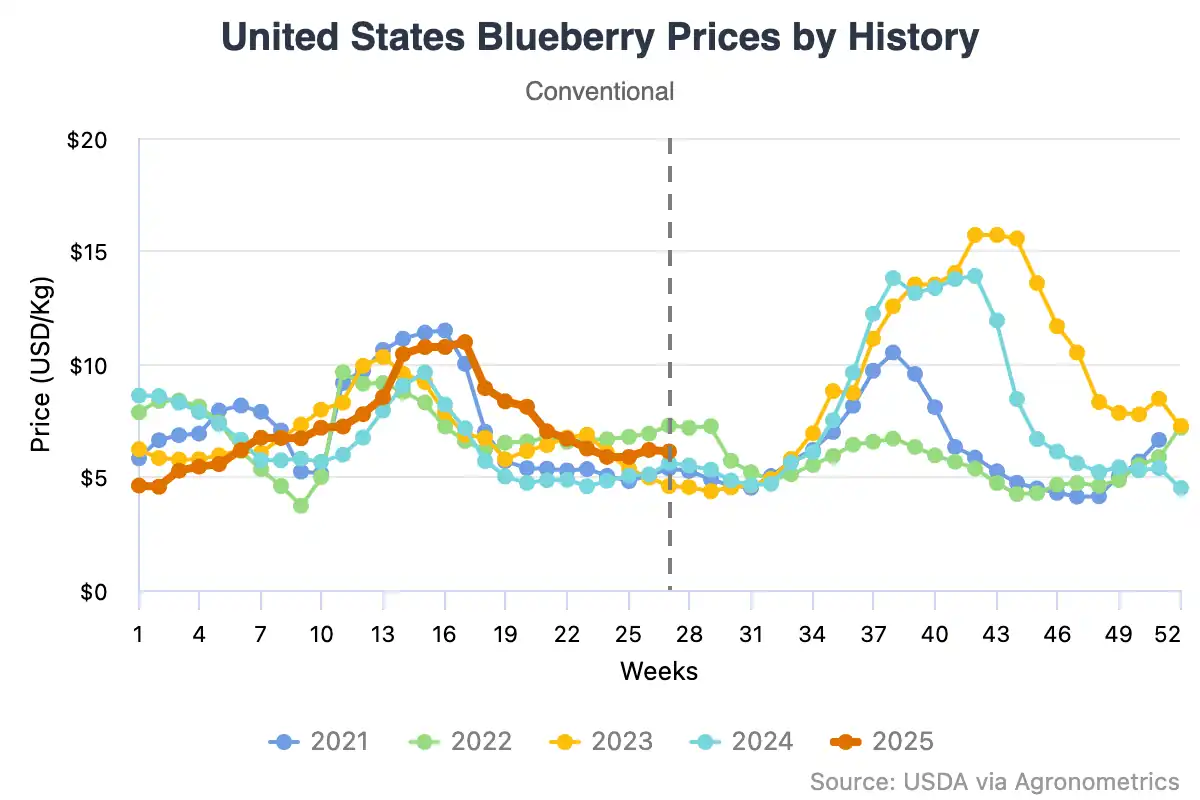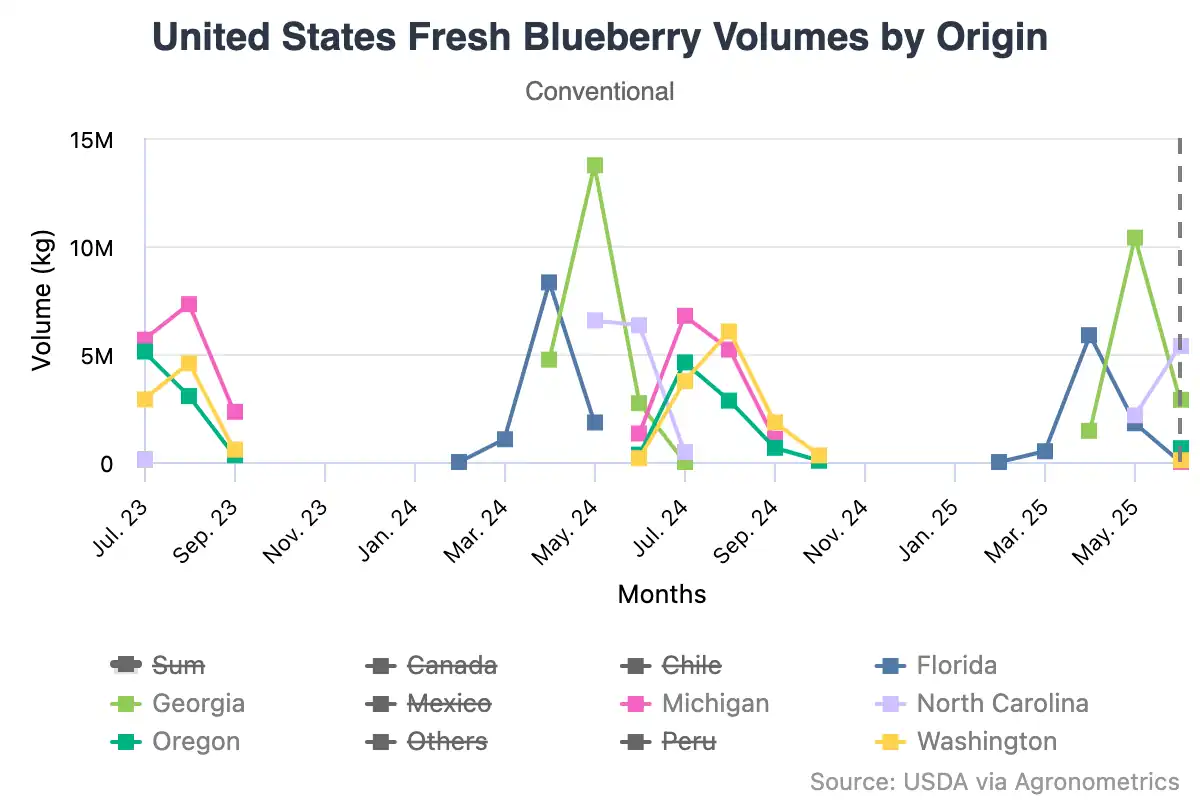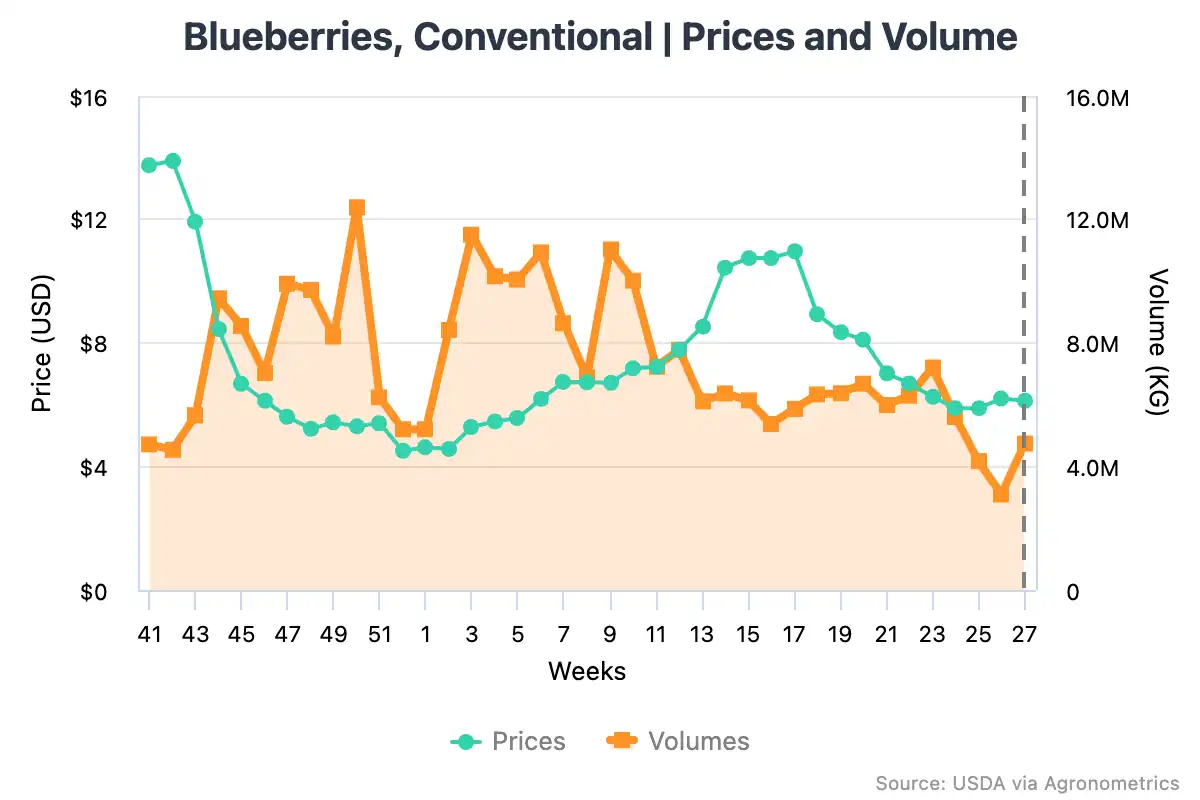Behind the sweetness of blueberries lies a supply chain with a significant economic impact: $9.1 billion (around €8.4 billion) annually in the United States.
The month of July not only marks the peak of the blueberry harvest in many U.S. states, but is also an opportunity to celebrate National Blueberry Month. This year, the tribute to this iconic fruit comes with record-breaking numbers.
According to the 2025 Impact Report by the U.S. Highbush Blueberry Council (USHBC), the blueberry sector contributes an estimated economic impact of $9.1 billion (around €8.4 billion) per year to the U.S. economy. This figure includes all stages of the supply chain: farming, packing, logistics, marketing, and foodservice.
Production and Employment in the U.S.
The sector supports over 61,676 full-time equivalent jobs and generates $3.3 billion (around €3 billion) in wages and salaries. “The impact of blueberry growers is as widespread as it is deeply rooted in the U.S. economy,” states Kasey Cronquist, president of the USHBC.
“From job creation to tax revenue, blueberry growers drive sustained economic growth in every region of the country.”
Domestic Production and Imports
July sees peak harvests in major producing states like Michigan, Oregon, New Jersey, and Washington. However, imports from Peru and Mexico have become a vital part of the U.S. supply chain during the fall and winter months.
The average price in week 27 was $6.13/kg (about €5.66/kg), marking a 9% increase from the $5.62 (about €5.19/kg) recorded in 2024.
Retail data highlights a sharp increase in promotions during July, with higher advertising volumes across all major retailers.

Consumption Growth and Preferences
The fruit’s popularity is also growing among consumers: according to a 2025 survey, 54% of Americans bought blueberries in the past year, compared to 37% two years earlier.
The Western and Midwestern regions lead consumption, with a higher share among middle-to-high income households.
Organic is also on the rise: 20% prefer organic blueberries, while another 24% alternate between conventional and organic products depending on availability and price.

Technological Innovation in the Supply Chain
To tackle labor-related challenges and boost efficiency, producers are investing in technology.
The USHBC’s BerrySmart Fields program promotes solutions such as drones, precision irrigation, robotic harvesting, and automated packing lines.
These innovations not only address operational needs but also strengthen the resilience of the entire industry.

A Modern and Flexible Model
Blueberries stand out in the fresh produce sector for their ability to adapt to seasons, logistics, and modern consumer preferences.
Domestic production dominates the summer, while imports ensure year-round availability. This balance between seasonality and supply readiness keeps the fruit on shelves all year long, powering an economic engine far beyond its sweet taste.
Source text and images: agronometrics.com










